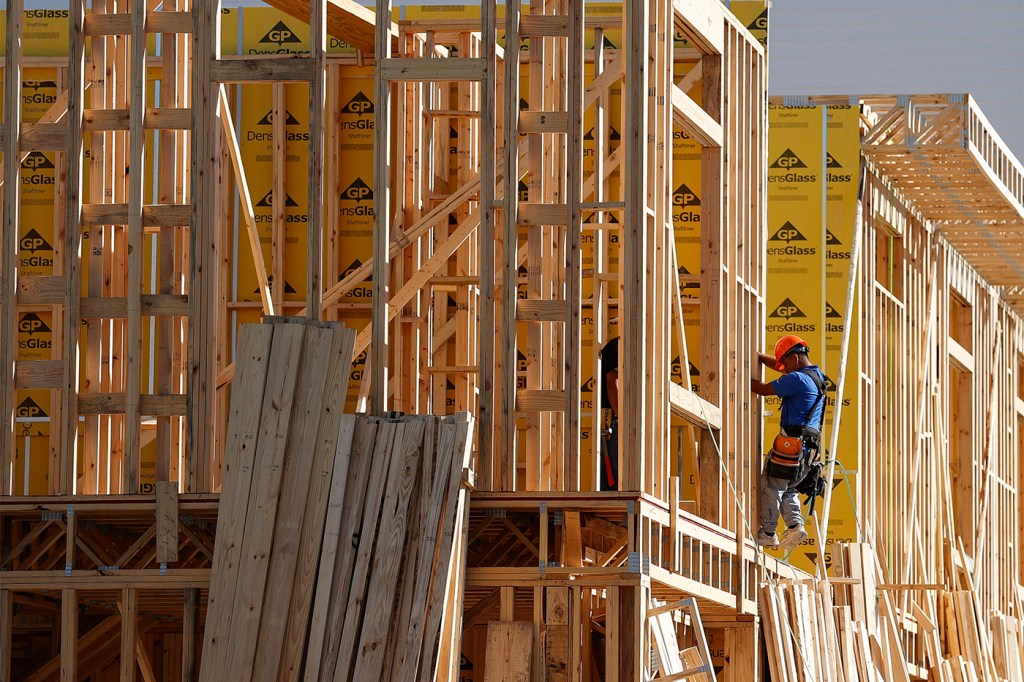Can the federal government really build 3 million homes?

Democratic presidential nominee Kamala Harris says she will build 3 million homes over four years if elected president.
But can the federal government build millions of homes?
Northeastern University housing experts say that it will take a toolbox of ideas to dent the housing crisis — and don’t expect the federal government to build suburbs.
As for reaching a specific number like 3 million, that is really hard for the federal government to accomplish, experts say.
“At the end of the day, it really depends on the local conditions that are on the ground,” says Alicia Modestino, an associate professor in the School of Public Policy and Urban Affairs and the Department of Economics at Northeastern University.
Modestino, who is also the chair of the Massachusetts Housing Partnership Board, notes that housing and zoning decisions are primarily made at the local level.
“That’s why it becomes really hard to promise 3 million homes, and also really hard to promise that those are going to be in the places where it’s needed most and also of the type of housing that’s needed most,” Modestino says.
The United States lacks between 4 million and 7 million homes, driving up costs for existing homes and making housing affordability at its lowest level in decades. The problem is particularly acute in and around coastal cities like Boston, San Francisco and New York.
Politicians are aware of the problem, and both Harris and Republican presidential nominee Donald Trump have promised to reduce regulations and open land for housing.
A multipronged housing crisis
Ivan Rupnik, associate professor of architecture at Northeastern, says we are in a multipronged “housing crisis.”
“Whether you live in an urban, suburban or rural area, you are likely paying more for your mortgage or rent than is deemed economically sustainable,” Rupnik says. “In addition to affordability, we have a housing access crisis — the right housing for your needs may not exist, at all, or at a price point you are comfortable with.”
Rupnik says what is most “frustrating” about the housing crisis is that it was foretold for some time — and its solutions have been known as well.
He evoked Cassandra, a mythological figure cursed to be both able to predict the future and to have no one believe those predictions.
“Like Cassandra, a heterogeneous mix of government officials, industry representatives, researchers and citizen groups called for major structural reform to the sector that produces and delivers housing and the framework that oversees them more than 50 years ago,” Rupnik says.
Featured Posts
The groups proposed a “high-tech housing sector” that could apply a manufacturing mindset to the production and delivery of a variety of housing types combining quality and affordability, Rupnik says. The groups also proposed a framework to support that sector by rewarding innovation in areas including building code and zoning, financing and insurance.
These ideas were put to the test when a coalition led by the U.S. Department of Housing and Urban Development (HUD) that included other federal agencies, local governments, citizen groups, universities and industry groups developed a demonstration project called “Operation Breakthrough between 1969 and 1973.
“Unfortunately, many of the reforms planned to follow this demonstration project were not implemented,” Rupnik says.
Research and advisory group
But Rupnik is working to correct this.
In 2018, he formed a research and advisory group called MOD X that collaborates with HUD to research effective government-led action to accelerate offsite construction for housing. Their work is now being implemented in six states, including Massachusetts.
“This work draws on the innovative proposals first put forth more than a century ago in the U.S., which have since been implemented at scale by several other countries,” Rupnik says, citing Sweden, Japan and the United Kingdom. “While we do not have Cassandra’s ability to see the future, we also hope that ample evidence now exists that business-as-usual will likely not solve our housing crisis or prepare us for the future challenges of housing-related climate adaptation.”
Meanwhile, Modestino notes that although the federal government has limited power over the actual permitting and construction of homes, it can encourage housing through existing programs.
She advocated for more federal funding for low-income housing such as the low-income housing tax credit program, programs to encourage greater flexibility to build low-income housing, and for programs that lock in interest rates for low-income housing.
And she encouraged more state programs that offer incentives for building.
Massachusetts, for instance, offers laws providing the proverbial carrots (rewards) and sticks (punishment) in order to encourage housing.
The MBTA Communities Law, for instance, mandates all towns with MBTA service to allow a certain amount of multifamily housing by right. Meanwhile, the 40B program fast-tracks zoning for affordable housing in communities without 10% affordable housing stock.
Neither of these laws is a silver bullet, of course, Modestino notes. And what works in Massachusetts may not work in California or Iowa.
But it’s a start. Just maybe not enough for 3 million homes.
“It’s a little like pushing on a string — the federal government can only push so much of that,” Modestino says. “Then it depends on the political will on the ground to be able to carry forward with those ideas.”











